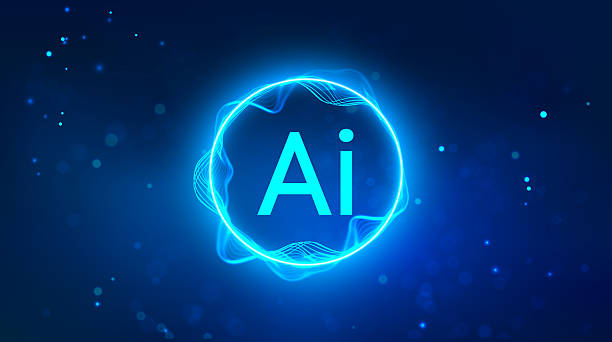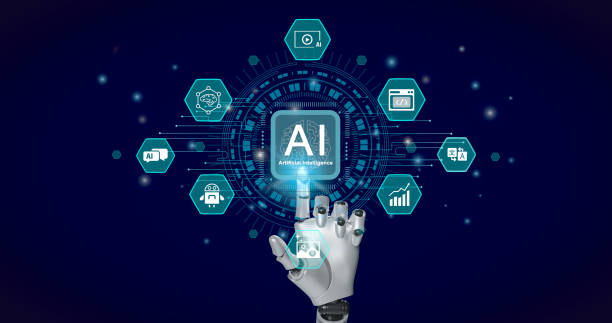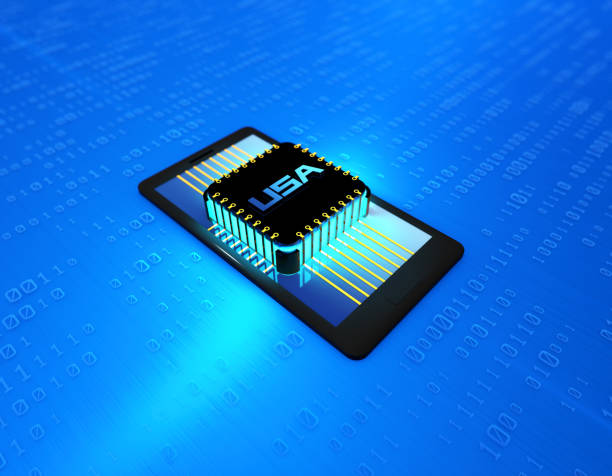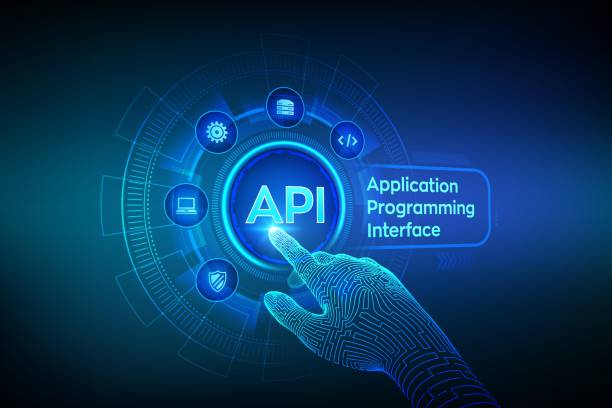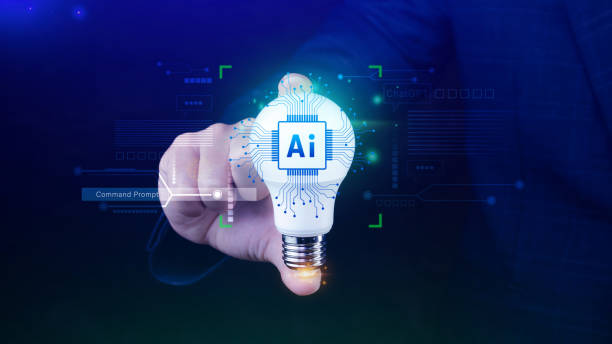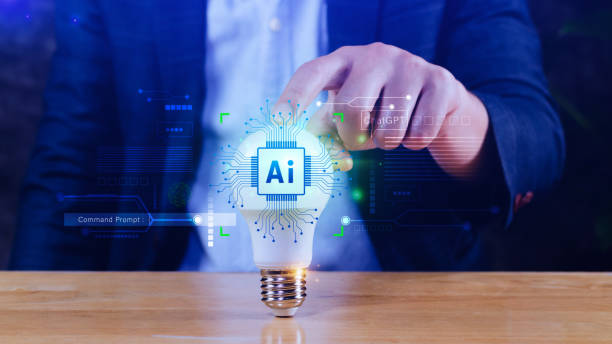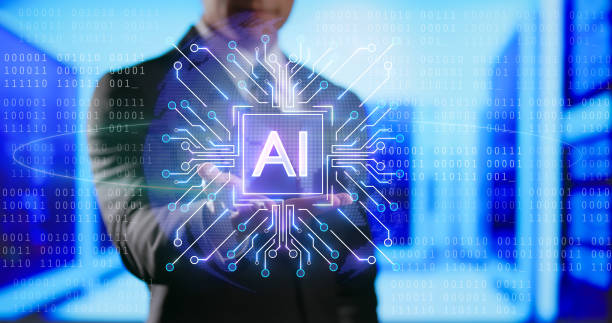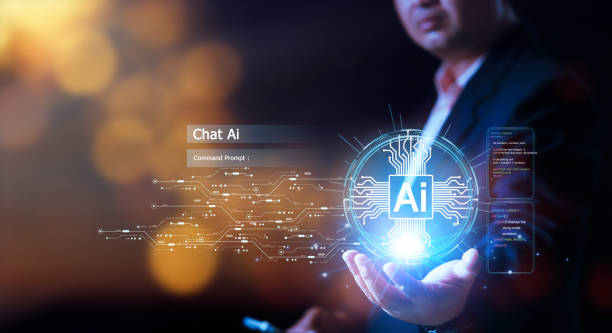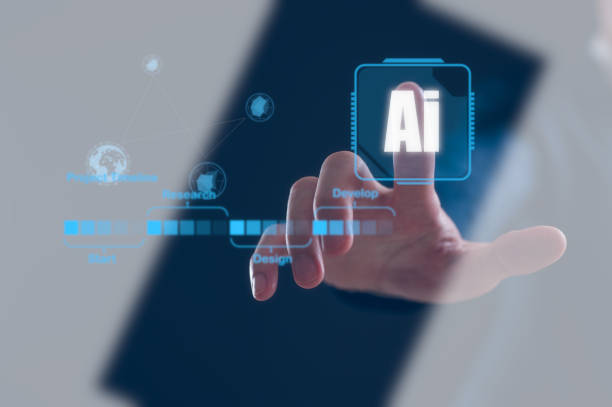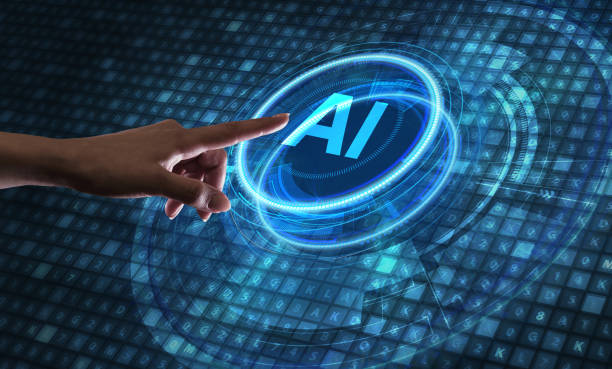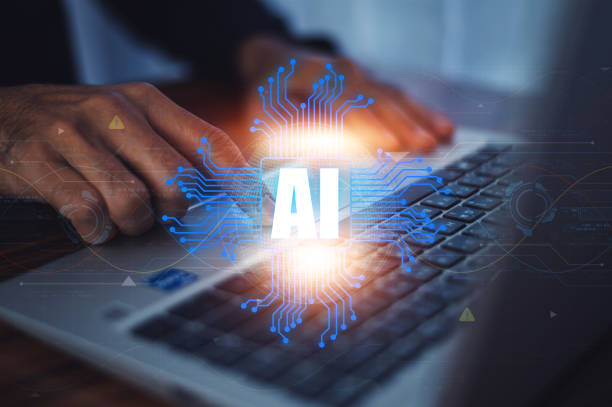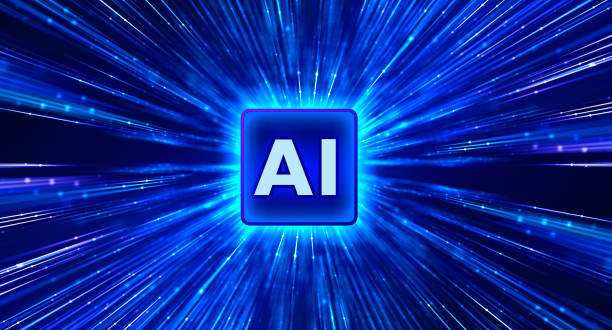What is an Artificial Intelligence Robot and How Does it Work?
#Artificial Intelligence Robot is a combination of two distinct, but related, fields: robotics and artificial intelligence.
In simple terms, an AI robot is a physical machine that, using algorithms and AI models, is capable of performing tasks that typically require human intelligence.
These tasks can include pattern recognition, decision-making, problem-solving, learning, and interaction with the environment.
The way an AI robot works is that data is first collected through sensors (such as cameras, microphones, temperature and pressure sensors).
Then, this data is transferred to an AI system (such as a neural network or a machine learning algorithm).
The AI system, using the collected data, identifies patterns and relationships and makes decisions based on them.
Finally, the decisions made are sent to actuators (such as motors, arms, and other mechanical components) so that the robot can take the necessary action.
Artificial intelligence enables the robot to perform complex tasks automatically and without human intervention.
For example, an AI robot designed to inspect oil pipelines can use cameras and sensors to collect images and data related to the condition of the pipes.
Then, the AI system, by analyzing this data, can identify leaks, corrosion, and other potential problems.
Finally, the robot can send the necessary warnings to operators or automatically take corrective actions.
AI robots have applications in various industries and can help improve productivity, reduce costs, and increase safety.
An AI robot is a powerful tool that can improve our lives in many ways.
Are you bothered by losing customers due to the old look or slow speed of your online store? The expert team at Rasaweb solves these problems with professional online store website design!
✅ Increase customer trust and brand credibility
✅ Incredible speed and excellent user experience
Get a free consultation with Rasaweb now ⚡
Main Components of an Artificial Intelligence Robot
An #AI robot consists of several main parts, each of which plays an important role in its overall performance:
- Sensors: Sensors are responsible for collecting information from the surrounding environment.
This information can include images, sounds, temperature, pressure, location, and so on.
There are different types of sensors, each designed to collect a specific type of information. - Actuators: Actuators are responsible for performing physical actions.
These actions can include moving arms, turning wheels, opening and closing valves, and so on.
There are different types of actuators, each designed to perform a specific type of movement. - Controller: The controller is responsible for processing the information collected by the sensors and deciding how the actuators should operate.
The controller is usually a computer that is programmed to make appropriate decisions using artificial intelligence algorithms. - Power Source: The power source is responsible for providing the energy required for the robot to function.
The power source can include batteries, solar cells, or connection to the power grid. - Body: The body is responsible for holding and protecting the internal components of the robot.
The body is usually made of durable and lightweight materials.
Click here to preview your posts with PRO themes ››
These components work together to enable the AI robot to perform various tasks.
An AI robot is a complex system that requires careful design and engineering.
Choosing the right components and coordinating between them plays an important role in the performance and efficiency of the robot.
An AI robot can significantly help improve human lives.
Various Applications of Artificial Intelligence Robots in Different Industries
#AI robots are rapidly penetrating various industries and offering diverse applications.
Here are some common applications of AI robots in different industries:
- Manufacturing Industry: AI robots can be used to perform repetitive and dangerous tasks, such as welding, painting, assembly, and packaging.
These robots can work with higher accuracy and speed than humans and help reduce costs and increase productivity. - Healthcare Industry: AI robots can be used to perform precise surgeries, provide rehabilitation services, assist the elderly and people with disabilities, and provide remote medical care.
- Agriculture Industry: AI robots can be used for planting, tending, and harvesting agricultural products, irrigating, spraying pesticides, and diagnosing plant diseases.
- Transportation Industry: AI robots can be used for driving self-driving cars, delivering goods, and managing traffic.
- Service Industry: AI robots can be used for providing customer service, taking orders, answering questions, and providing information.
These are just examples of the widespread applications of AI robots in various industries.
With the advancement of technology, it is expected that newer applications of AI robots will be developed in the future.
AI robots can significantly help improve human lives and advance societies.
An AI robot is an emerging technology that has a lot of potential to change the world.
| Industry | Application of AI Robot |
|---|---|
| Manufacturing | Welding, Assembly, Packaging |
| Healthcare | Surgery, Rehabilitation, Remote Care |
| Agriculture | Planting, Tending, Harvesting |
| Transportation | Self-Driving Cars, Delivery of Goods |
Advantages and Disadvantages of Using Artificial Intelligence Robots
Using #AI robots has its own advantages and disadvantages that should be considered before deploying them:
Advantages:
- Increased Productivity: AI robots can work with higher speed and accuracy than humans and help increase productivity.
- Reduced Costs: AI robots can reduce labor, energy, and raw material costs.
- Improved Safety: AI robots can perform dangerous tasks and prevent human injury.
- High Accuracy and Quality: AI robots can work with higher accuracy and quality than humans.
- Performing Repetitive Tasks: AI robots can perform repetitive and tedious tasks without fatigue and error.
Disadvantages:
- High Initial Cost: Purchasing and deploying AI robots can have a high initial cost.
- Need for Expertise: Setting up, maintaining, and programming AI robots requires expertise.
- Job Loss: The use of AI robots can lead to job loss in some industries.
- Ethical Issues: The use of AI robots can raise ethical issues such as accountability, privacy, and discrimination.
- Dependence on Technology: Over-reliance on AI robots can disrupt processes in the event of technical problems.
The decision to use AI robots should be made by considering their advantages and disadvantages and carefully evaluating specific needs and circumstances.
An AI robot is a powerful tool that can help improve human lives, but it should be used responsibly and with consideration of ethical issues.
An AI robot has a lot of potential to change the world.
Are you losing potential customers due to an unprofessional website? Rasaweb is your answer! With our specialized corporate website design services:
✅ Enhance the credibility and position of your business
✅ Experience attracting more targeted customers
⚡ Take action now to receive a free consultation!
What Will the Future of Artificial Intelligence Robots Be?
The future of #AI robots is very bright and full of potential.
With the advancement of technology, AI robots are expected to become smarter, more capable, and more versatile.
Here are some key trends that are shaping the future of AI robots:
- Deep Learning: Deep learning allows robots to learn from large amounts of data and identify complex patterns.
This leads to improved robot performance in tasks such as face recognition, natural language processing, and self-driving. - Explainable AI: Explainable AI allows robots to explain how they make decisions.
This helps increase trust and acceptance of robots in society. - Human-Robot Collaboration: In the future, it is expected that humans and robots will collaborate more with each other.
Robots can perform repetitive and dangerous tasks, while humans can perform creative and complex tasks. - Autonomous Robots: Autonomous robots are able to perform tasks without human intervention.
These robots can operate in various environments, such as factories, warehouses, hospitals, and even homes. - Social Robots: Social robots are designed to interact with humans.
These robots can be used to provide customer service, education, care for the elderly and children, and even as companions.
The future of AI robots also faces challenges.
These challenges include ethical issues, job loss, cybersecurity, and privacy.
However, by properly managing these challenges, the immense potential of AI robots can be used to improve human lives and advance societies.
An AI robot is a transformative technology that can shape the future of the world.
Wired covers technology reports and new trends.
How to Choose the Right Artificial Intelligence Robot for Your Business?
Choosing the right #AI robot for a business requires careful consideration of needs, goals, and budget.
Here are some key tips for choosing the right AI robot:
- Determine Needs and Goals: First, you need to determine what problem you want the AI robot to solve and what goals you want to achieve.
- Research and Review: There are different types of AI robots on the market.
Before buying, do your research and identify robots that match your needs and goals. - Review Features and Capabilities: Review the different features and capabilities of AI robots and make sure that the robot you choose has the capabilities you need.
- Consider Cost: Consider the cost of purchasing, installing, maintaining, and training for the AI robot and make sure you have enough budget for it.
- Check Support: Ask the robot manufacturer about support and warranty services.
- Consult with Experts: If needed, consult with AI and robotics experts to make the best choice.
- Test and Evaluate: Before making a final purchase, test the AI robot and make sure it performs as expected.
Choosing the right AI robot is an important decision that can have a big impact on the success of your business.
By spending enough time and attention, you can make the best choice and benefit from the advantages of an AI robot.
An AI robot can help improve productivity, reduce costs, and increase customer satisfaction.
An AI robot is a valuable investment for businesses.
Ethical Challenges Related to Artificial Intelligence Robots
The development and use of #AI robots bring with them several ethical challenges that need to be addressed:
- Accountability: In the event of an error or damage caused by an AI robot, who is responsible? Is the manufacturer, programmer, user, or the robot itself responsible?
- Bias: If the training data for an AI robot is biased, the robot may also make biased decisions.
- Privacy: AI robots can collect a lot of information about people.
How can people’s privacy be protected? - Cybersecurity: AI robots may be the target of cyber attacks.
How can the security of robots be guaranteed? - Transparency: The decisions of AI robots should be transparent and explainable.
How can we ensure that the decisions of robots are understandable? - Job Displacement: The use of AI robots can lead to job loss in some industries.
How can these negative effects be reduced? - Control: How can we ensure that AI robots are under human control and serve human interests?
These challenges require careful discussion and examination by experts, policymakers, and the general public.
For responsible use of AI robots, appropriate laws and regulations must be developed and ethical principles must be observed.
AI robots can help improve human lives, but they should be used responsibly and with consideration of ethical issues.
Harvard University’s Ethics Center examines ethical issues.
| Ethical Challenge | Description |
|---|---|
| Accountability | Determining responsibility in case of error |
| Bias | Preventing biased decisions |
| Privacy | Protecting personal information |
| Cybersecurity | Ensuring the security of robots |
The Impact of Artificial Intelligence Robots on the Labor Market
#AI robots have a significant impact on the labor market, and these impacts are both positive and negative.
On the one hand, AI robots can perform repetitive and dangerous tasks and help create new jobs in areas such as robot development, maintenance, and programming.
On the other hand, the use of AI robots can lead to job loss in some industries.
Some of the jobs that are at risk of being lost include clerical jobs, production line workers, drivers, and machine operators.
However, jobs that require creativity, critical thinking, social skills, and emotional intelligence are less at risk of being replaced by robots.
To mitigate the negative effects of AI robots on the labor market, governments, organizations, and individuals should take the following actions:
- Education and Retraining: Educating and retraining workers to acquire new skills that are needed in the age of artificial intelligence.
- Supporting Innovation: Supporting innovation and creating new jobs in areas related to artificial intelligence.
- Developing Support Policies: Developing support policies to help workers who have lost their jobs.
- Changing Attitudes: Changing attitudes towards work and accepting the reality that some jobs may disappear and new jobs will be created.
An AI robot is a powerful technology that can help improve human lives.
By properly managing the effects of this technology on the labor market, we can benefit from its advantages and reduce its negative effects.
An AI robot is an opportunity to create a better and fairer labor market.
An AI robot requires careful planning and management.
Do you know that your customers’ first impression of your company is your website? Multiply the credibility of your business with a powerful corporate website from Rasaweb!
✅ Exclusive and eye-catching design tailored to your brand
✅ Improving user experience and increasing customer acquisition
⚡ Get a free consultation!
Important Tips for Maintaining and Repairing Artificial Intelligence Robots
Proper maintenance and repair of #AI robots play an important role in increasing their lifespan, improving their performance, and preventing sudden breakdowns.
Here are some important tips for maintaining and repairing AI robots:
- Periodic Inspection: Inspect the robot periodically and make sure that its parts and components are healthy.
- Cleaning: Clean the robot regularly and prevent the accumulation of dust and dirt on its parts.
- Lubrication: Lubricate the moving parts of the robot regularly.
- Checking Connections: Check the electrical and mechanical connections of the robot and make sure they are tight.
- Software Updates: Update the robot’s software regularly.
- Maintenance in Suitable Conditions: Maintain the robot in suitable conditions and avoid exposing it to moisture, heat, and direct sunlight.
- Training: Provide operators and technicians with the necessary training on how to maintain and repair the robot.
- Repair by Experts: In the event of a problem, entrust the repair of the robot to experienced specialists.
- Using Genuine Parts: Use genuine and high-quality parts to repair the robot.
- Following Instructions: Follow the manufacturer’s instructions regarding the maintenance and repair of the robot.
By following these tips, you can properly maintain your AI robot and ensure its optimal performance.
An AI robot is a valuable investment that can serve you for years with proper maintenance.
An AI robot needs attention and care.
With proper maintenance and repair, you can avoid additional costs.
Artificial Intelligence Robots and the Future of Education
#AI robots can play an important role in the future of education and transform learning and teaching methods.
Here are some applications of AI robots in education:
- Personalized Learning: AI robots can analyze data about students, identify their needs and strengths and weaknesses, and provide a personalized learning plan for each student.
- Smart Private Tutor: AI robots can act as a smart private tutor and help students learn course concepts.
- Automated Assessment: AI robots can automatically assess assignments and tests and provide instant feedback to students.
- Creating Engaging Educational Content: AI robots can create engaging and interactive educational content.
- Access to Education for All: AI robots can provide access to education for students who live in remote areas or have disabilities.
- Learning New Skills: AI robots can help people learn new skills that are needed in the age of artificial intelligence.
By using AI robots in education, we can improve the quality of education, make learning more engaging and effective, and provide access to education for all.
An AI robot is a powerful tool that can help transform education.
An AI robot requires careful planning and management.
An AI robot is an opportunity to create a better and fairer education system.
AI robots can help students unlock their potential.
AI robots can help teachers perform their tasks more effectively.
AI robots can help the education system respond to future challenges.
EdSurge covers educational technology news.
Frequently Asked Questions
| Row | Question | Answer |
|---|---|---|
| 1 | What is an AI robot? | An AI robot is a machine that is capable of understanding, reasoning, learning, and solving problems, and can perform complex tasks with relative autonomy. |
| 2 | What are the most important applications of AI robots? | The main applications include industrial manufacturing, customer service (chatbots), medicine and surgery, self-driving transportation, space exploration, and military affairs. |
| 3 | What is the main difference between an AI robot and a regular robot? | A regular robot only follows programmed instructions, while an AI robot can learn from data, make decisions, and adapt to new environments. |
| 4 | How do AI robots learn? | They learn through machine learning algorithms (such as deep learning, reinforcement learning) and processing vast amounts of data, identifying patterns, and improving their performance. |
| 5 | Can AI robots have feelings? | Currently, AI robots do not have real feelings in the human sense. They can imitate or recognize emotions, but they do not have an understanding and experience of them. |
| 6 | What are the current limitations of AI robots? | Limitations include the need for a lot of data, the inability to understand abstract concepts, the lack of real creativity, ethical issues, and the challenges of generalizability in new environments. |
| 7 | What is the role of artificial intelligence in the development of Humanoid robots? | Artificial intelligence helps humanoid robots walk, maintain their balance, understand their surroundings, interact with humans, and perform complex tasks. |
| 8 | How is the future of AI robots predicted? | It is predicted that AI robots will become smarter, more autonomous, and capable of performing more complex tasks in everyday life and industry, and their interaction with humans will increase. |
| 9 | Can AI robots replace all human jobs? | It is unlikely that all human jobs will be replaced. Robots take over many repetitive and dangerous tasks, but jobs that require creativity, empathy, and moral judgment will remain. |
| 10 | What ethical and social challenges are raised by the expansion of AI robots? | Challenges include issues related to privacy, data security, ethical decision-making by robots, impact on employment, and accountability in the event of errors. |
And other services of Rasa Web Advertising Agency in the field of advertising
Intelligent Data Analysis: A new service to increase SEO ranking improvement through attractive user interface design.
Intelligent Direct Marketing: A new service to increase click-through rates through attractive user interface design.
Intelligent Google Ads: Transform user engagement with the help of intelligent data analysis.
Intelligent SEO: A fast and efficient solution for online growth focusing on the use of real data.
Intelligent Data Analysis: A new service to increase customer acquisition through marketing automation.
And over a hundred other services in the field of internet advertising, advertising consulting, and organizational solutions
Internet Advertising | Advertising Strategy | Reportage Advertisement
Resources
What are intelligent robots and what are their applications?
,What is an artificial intelligence robot?
,What is an Intelligent Robot? Everything About Intelligent Robot
,Everything you need to know about intelligent robots
? Rasaweb Digital Marketing Agency is a specialist in boosting your business by providing comprehensive SEO services, targeted advertising and Professional website design.
📍 Tehran, Mirdamad Street, next to Central Bank, Southern Kazerun Alley, Ramin Alley No. 6


